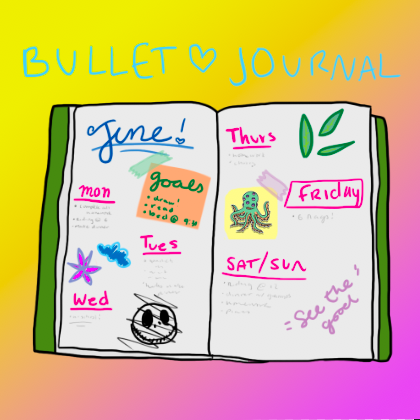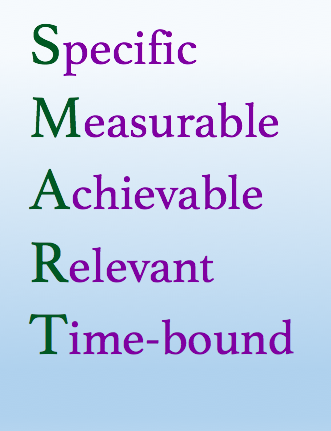Column: The SMART guide to resolutions

A photo illustration of a journal, which students use to stay organized. Many students use planners to keep track of homework. Photo illustration by Scarlet Levin.
When you think of the New Year, what is the first thing that comes to mind? If you said New Year’s resolutions, then you’ve got the right answer.
Knowing how ambitious and persistent Archer girls are, I have no doubt that you have fully stuck to whatever resolution you planned and are reshaping your life at this very instant. Right?
I know from first-hand experience that sticking with resolutions is hard. Last year, my goal was to make a drawing every day. While that didn’t happen, my technique has improved greatly, my knowledge on ancient art has expanded and I joined an art class. Even though I didn’t technically complete my resolution, it was always on my mind, and it definitely reshaped my entire life.
So instead of feeling bad about not sticking with your goal thus far, take the time (and read this piece) to put resolutions back into your mind, heart and yearlong plan.
For starters, if you feel bad about falling out of sync with your resolutions, imagine how the ancient Babylonians felt. Credited with being the first people to have resolutions, their new year came mid-March along with the planting of their crops. Akitu was a twelve day celebration in the New Year, marked the Babylonians’ loyalty towards the current king or the crowning of a new one. These people made promises not to themselves, like we do, but to the gods. If the promises of paying off debt or returning what had been borrowed were not kept, the gods did not “favor” these people and stopped blessing their crops, animals and families.
But modern resolution are a little different. It’s important to make sure it’s the right resolution for each individual.
Jen Miller wrote “How to Make (and Keep) a New Year’s Resolution” in the New York Times. In it, she discusses that “one third of resolutioners don’t make it past the end of January.” If a resolution is created based on societal pressures or expectations, or is too vague and lacks a plan, it has a higher chance of failure. Resolutions should be solely for the individual, not for someone else.

Miller also recommends SMART, which stands for specific, measurable, achievable, relevant and time-bound, in making a good resolution. Resolutions needs to be personal, achievable and something that (if completed) will make you happy.
A good way to keep track of a resolution is with a handy-dandy bullet journal. Not only are they aesthetically pleasing and charmingly Instagram-worthy, they are completely personal and (in my opinion) very calming. I started a bullet journal last year, and it was a great decision. Youtuber AmandaRachLee’s journal is more practical, while Gretchen Hope adds more personal elements to hers. My favorite is by Cheyenne Barton because her’s adds practical and personal pieces that really makes her journal pop! Bullet journals are a fun and cute way to keep track of SMART goals and life alike.
So as you embrace February, take on the months to come with a bullet journal in hand and a head full of goals. I can’t wait to see what you’ve achieved by 2019.





![Freshman Milan Earl and sophomore Lucy Kaplan sit with their grandparents at Archer’s annual Grandparents and Special Friends Day Friday, March 15. The event took place over three 75-minute sessions. “[I hope my grandparents] gain an understanding about what I do, Kaplan said, because I know they ask a lot of questions and can sort of see what I do in school and what the experience is like to be here.](https://archeroracle.org/wp-content/uploads/2024/03/grandparents-day-option-2-1200x800.jpg)























































